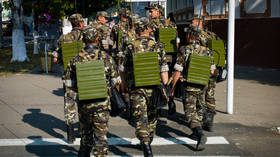Crisis in Transnistria: Will the Ukraine conflict spread into other parts of Europe?
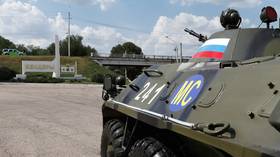
While the world’s eyes are on Ukraine, Transnistria is facing an explosive situation. De facto self-governing since the Soviet collapse, the small territory, which borders Ukraine, is internationally recognized as part of Moldova.
A series of explosions shook the capital, Tiraspol, at the end of April, and shots have been heard near the border with its war-torn neighbor. Several key military and infrastructure buildings were hit – the Ministry of State Security, a TV and radio center, as well as the largest ammunition warehouse in Eastern Europe. The Transnistria issue has simmered on the fringes of global politics since the original fighting was settled on July 21, 1992, and a ceasefire was signed.
Now, 30 years later, this 'frozen conflict' is challenging European security once again. RT explains who could benefit from an escalation in Transnistria and how developments in the region will be affected by Russia’s special military operation in Ukraine.
Explosive situation
The breakaway Pridnestrovian Moldavian Republic (PMR) was one of the first regions to go on high alert after the Russian operation began in February. The majority of its residents take a pro-Moscow stance, and since the beginning of the 1990s, Transnistria has severed ties with Moldova and has relied on the Kremlin's support. Geographically, however, the PMR is close to the southwest of Ukraine, bordering Odessa and Vinnitsa.
Since the first days of Moscow’s operation, it became obvious that provocations could occur here. And it seems they have. On April 25, shots were allegedly fired at the Ministry of State Security from a grenade launcher. A fire started in the building as a result, and the explosion shattered windows in the nearby buildings, but no one was injured or killed. While the emergency services dealt with the debris, the authorities tried to figure out who was behind the shooting. Eventually they concluded that such episodes played into the hands of those who wanted to drag Transnistria into the Russia-Ukraine conflict.
The next day, a military airfield near Tiraspol was hit, and later two antennas in Mayak, where the Transnistrian TV and radio center is located, were blown up. Bloggers discovered that they belonged to the Russian Television and Radio Broadcasting Network and had been transmitting to the US, the Middle East, and Latin America.
After the series of explosions, the PMR Security Council raised the terrorist threat alert to the top level and promised to “implement urgent measures that would allow the authorities to evacuate people, treat the victims, provide psychological counseling, and help secure properties if owners have to leave.”
The PMR's president, Vadim Krasnoselsky, believes that Ukraine was behind the incidents. “We know where the terrorists came from and where they went afterwards. I assure you, they have nothing to do with the Transnistria issue,” the politician said.
The local authorities also decided to cancel the celebration of Victory Day on May 9 as a precaution. They banned fireworks and asked people not to bring flowers to the tombs of fallen Soviet soldiers. “Organizing gatherings in certain locations is not safe,” Krasnoselsky explained, adding that someday they would celebrate the victory once again as they did in May 1945.
Despite all the measures taken, the situation in Transnistria was still tense during the following days. On April 27, VOG-25 grenade launchers were apparently used to shoot at military warehouses in Kolbasna where Russian peacekeepers are stationed. The PMR Investigative Committee concluded that the attack was organized from Ukrainian territory.
Kolbasna, located near the Ukrainian border, is home to the largest ammunition stockpile in Eastern Europe. In 2000, it held 42 tons of artillery and infantry ammunition and other military equipment. Following agreements reached at the 1999 OSCE summit in Istanbul, over 20 tons were relocated or destroyed, but the facility still holds a significant number of weapons deposited there after Soviet, and later Russian, troops withdrew from Germany and Czechoslovakia.
Right after Moscow started its military operation, certain Telegram channels began to discuss scenarios in which Ukraine would try to take over the warehouse and grab the weapons. The authorities didn’t comment on the rumors – apparently they believed that the US and EU had supplied the country with enough modern gear.
Rising tensions
The 1992 Transnistria conflict was caused by the disintegration of the Soviet Union. Transnistria was part of the Moldovan Soviet Republic, an area populated by Russian-speaking people, and today it is a breakaway republic locked in between Moldova and Ukraine. The possibility of 'defrosting' the Transnistria conflict has been discussed for a few years.
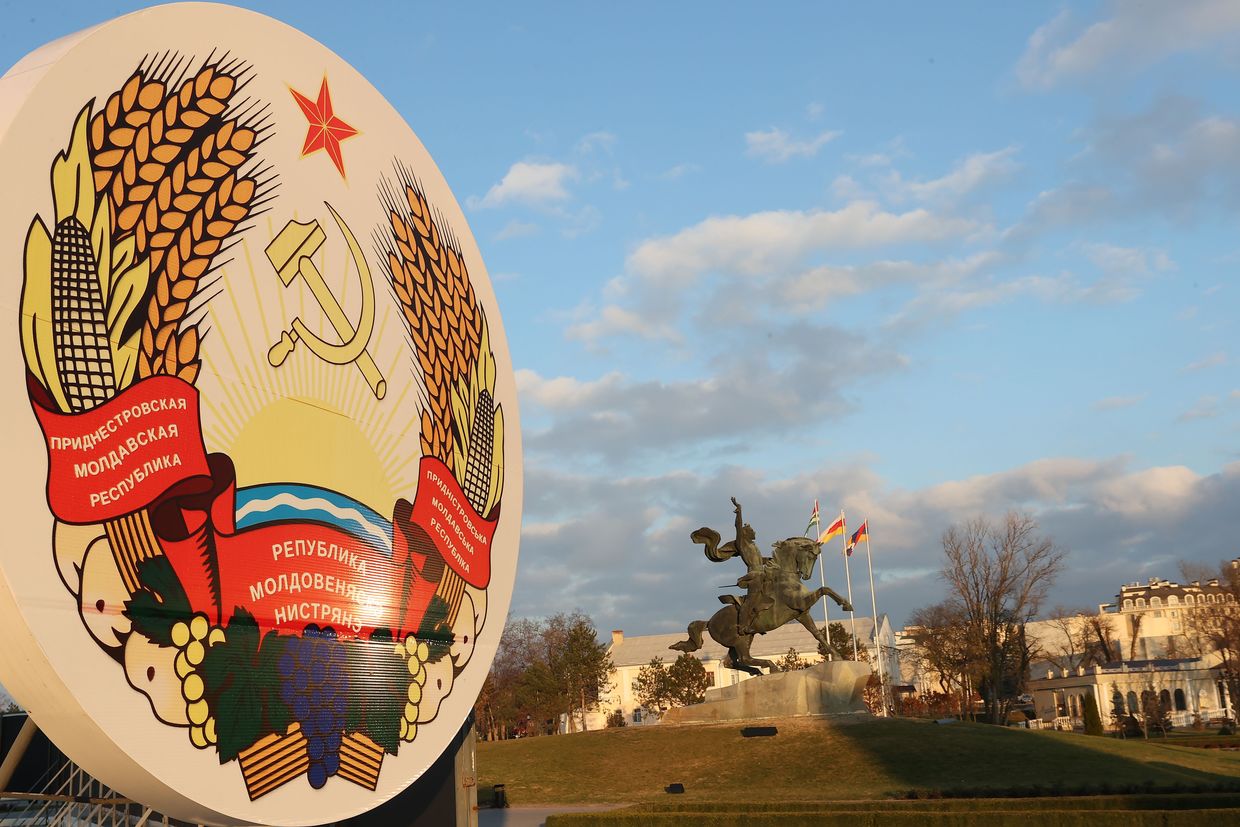
It reappeared on the agenda in 2014, after Crimea reunited with Russia and a conflict was sparked in Donbass. Half of the 500,000 people living in Transnistria are Russian citizens, and the authorities have been adjusting its laws to Russian law since 2016 in order to accommodate future integration. In this context, Ukraine began to view the PMR as a hostile part of the 'Russian world' near its borders.
The escalation between the two guarantors of the conflict settlement – Russia and Ukraine – has been raising the risk of a defrosting. In 2014, this led to stronger ties between Ukraine and Moldova, which increased military and political pressure on the PMR. In 2022, the risk of escalation grew even higher. However, judging by the statements made by the politicians in Moldova and Transnistria, the two parties really want to avoid being drawn into the conflict.
Addressing the people of Ukraine, specifically the Vinnitsa and Odessa regions, on February 26, President Krasnoselsky said that the rumors of a threat coming from Transnistria are a “provocation.”
“I am fully confident that all those spreading this misinformation are either completely out of touch with the situation or are trying to stir up trouble … Don’t believe rumors spread by shady actors and troublemakers, keep a sober mind and support those who need it if you can,” he said.
Moldova’s response to the string of explosions in Transnistria has been relatively reserved. Speaking to the press after a meeting of the country’s Supreme Security Council on April 27, President Maia Sandu blamed the escalation on “pro-war forces” in the region “interested in destabilizing the situation,” without elaborating further. Minister of Defense of Moldova Anatolie Nosatii emphasized that his ministry was monitoring the events with a view to avoid further escalation.
Moldova is making every effort to distance itself from the Ukraine crisis, and the looming threat of escalation is a huge concern both for the government and the public. The country’s Information and Security Service issued a statement calling on people to remain calm and refrain from disseminating unverified information. “It’s important to prevent the spread of fake news fueling hatred and war,” the statement said.
However, while Moldovan authorities attempted to calm citizens down, the Armed Forces of Ukraine started a military exercise near Podolsk (formerly Kotovsk), a city near the Transnistrian border, deploying at least 2,000 soldiers. Ukrainian journalist Dmitry Gordon commented that the Ukrainian Army must hit the PMR because it is a source of threat for the Odessa region.
Officially, Ukraine has denied any complicity in these incidents. However, some Ukrainian politicians made statements that would seem disturbing both for the PMR and for Moldova. Presidential adviser Alexey Arestovich said the attacks were playing into Russia’s hand and suggested that Ukrainian troops should enter Transnistria, emphasizing it would only happen if the Moldovan government requested such assistance directly. “We can manage [Transnistria] if the need arises. Snap, and it’s done,” he said.
President Volodymyr Zelensky, in turn, directly accused Russia of trying to destabilize the region. “We clearly understand that this is one of the steps of the Russian Federation. The special services are working there. It’s not just about fake news. The goal is obvious – to destabilize the situation in the region, to threaten Moldova. They show that if Moldova supports Ukraine, there will be certain steps,” he said.
However, Moldova’s Reintegration Bureau – a parliamentary body managing the Transnistrian settlement talks – rejected any offers of help from Ukraine. “The settlement of the Transnistrian issue can be achieved by political means and only on the basis of a peaceful solution, excluding military and other forcible actions,” it said. During a visit to Kiev, Speaker of the Moldovan Parliament Igor Grosu said Moldova would not provide military aid to Ukraine, citing the country’s neutrality.
But despite the statements by Moldova and the PMR, NATO is still expecting provocations in Transnistria. NATO Deputy Secretary General Mircea Geoana sees no military risks for Moldova in the nearest future, but foresees such risks for Ukraine. “We expect provocations, false flag operations – aiming to cause trouble not so much for Moldova as for the Ukrainian forces in the west of the country,” she said.
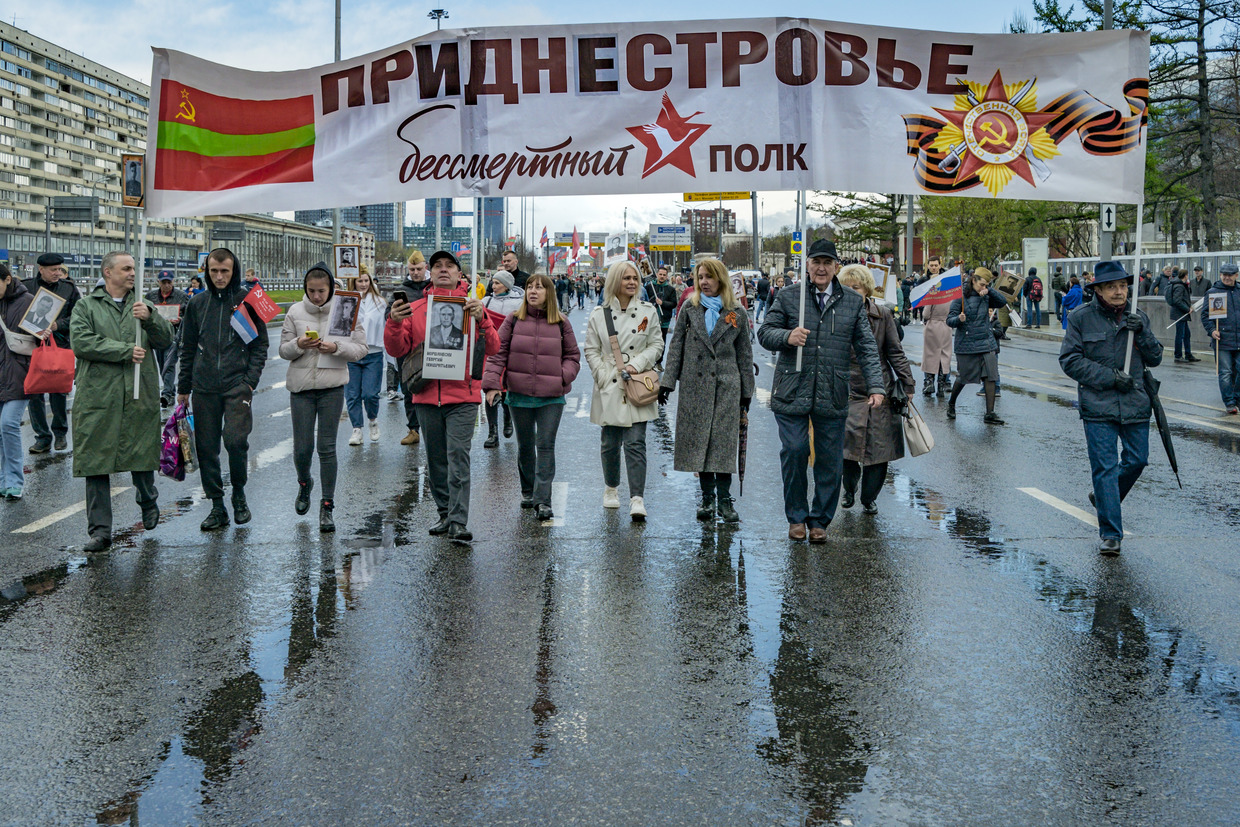
The EU was also concerned about the escalation in Transnistria; its diplomats urged the parties to keep calm and exercise restraint, but decided to increase support for Moldova. Some countries recommended their citizens leave Transnistrian territory or avoid visiting the region due to the worsening security situation. States that issued updated travel safety advisories included Canada, the US, Bulgaria, Israel, and Germany.
A Russian enclave
A couple of hours before the Transnistrian Ministry of State Security in Tiraspol was hit with a blast, Deputy Foreign Minister of Russia Andrey Rudenko said, “We do not see any risks in Transnistria. Our position remains unchanged. We are advocating for a peaceful settlement of the Transnistrian conflict.” Several days before that, however, Acting Commander of Russia’s Central Military District Major General Rustam Minnekayev announced that one of the goals of the second phase of the Russian military operation in Ukraine would be securing access to Transnistria. This opinion was later supported by Denis Pushilin, the head of the Donetsk People’s Republic.
A Russian peacekeeping force is currently stationed in Transnistria. Since Maia Sandu, a pro-European politician, took office, Moldova has spoken out in favor of a political settlement, which is only supposed to be possible after Russian troops are withdrawn. It is said to be needed to accelerate the reintegration of Moldova and Transnistria, which separated after an armed conflict broke out following the dissolution of the Soviet Union in the early 1990s.
However, the Moldovan authorities have blocked the transit of Russian cargoes multiple times since 2014 (before that, the peacekeepers maintained a connection with the “mainland” through Moldova as well as through Ukraine, including via rail). Russia referred Moldova to the 1992 agreement between the two countries, but to no avail. This is why controlling the southern regions of Ukraine that Minnekayev mentioned would potentially enable Russia to reopen a logistics pathway for its peacekeepers.
The last rotation of the Operational Group of Russian Forces in Transnistria was in November 2021. The battalion took watch at 15 peacekeeping stations and checkpoints on a 225-km-long and 20-km-wide area of the central and southern sections of the demilitarized zone. Overall, around 3,000 Russian troops are stationed there, many of them locals. Combined with an estimated 4,000 to 5,000 troops of the PMR military, the joint forces have a very limited offensive potential.
The best they can hope for if hostilities with Ukraine break out is to hold off the Ukrainian forces for a while. In this light, the recent incidents in Transnistria make sense – Ukraine is preventively whipping up tensions in the region. There is no concrete proof, however, apart from a few isolated statements. Viktor Andrusiv, an adviser to the Ukrainian interior minister, for example, has expressed regret about having to ask for Moldova's permission to invade Transnistria.
In theory, Ukraine is ready for this. Since 2014, it has been preparing for an escalation. The Ukrainian Armed Forces have held annual joint exercises between several branches of the military and agencies with support from the National Guard and Security Service of Ukraine in Odessa Region and on the Black Sea and rivers.
In 2018, Ukraine practiced coastal defense and control over a Danube-Dnieper section “under conditions of internal threats’ activation” as part of the Rapid Trident international exercise. In 2021, it practiced scenarios during the Sea Breeze international exercise, including fighting off a coastal landing in the Odessa area. But the most interesting part was the role of the Ukrainian Security Service in supposedly recapturing the region from “terrorists” and cutting off their retreat routes.
What’s next?
The situation in Ukraine is in fact trending towards an increased risk of expanding the conflict to Transnistria and drawing other nations into the quagmire. The Transnistrian case is definitely beneficial to the Ukrainian militarily as it can create another hotbed of tension for Russia. Media outlets are increasingly referring to it as a potential “second front.” This is impractical, however, as Kiev would have to divert forces much needed in Donbass and Russia – and establish an air supply route.
This means an all-out war is not likely to come to the unrecognized republic, with the PMR and Moldova definitely having no interest in fighting. But the risk of destabilization is still looming over the region.
It means were are left with the perfect moment for the system of checks and balances established 30 years ago to prove its resilience and prevent the Ukraine conflict from spilling over to the enclave. Provocations cannot be ruled out, though, and they are likely to intensify as the war escalates in the south of Ukraine.
Today, there is no settlement in sight to this conflict. The process has been stalled for several years. Talks in the 5+2 format (Moldova and the PMR, with Russia, Ukraine, and the OSCE as mediators, and the US and EU as observers) were effectively put on hold in 2019. No progress has been made on humanitarian issues as well.
In reality, the Transnistrian conflict is now also connected with the Donbass. This has led to Ukraine exerting more economic pressure against the PMR than even Moldova in 2021.
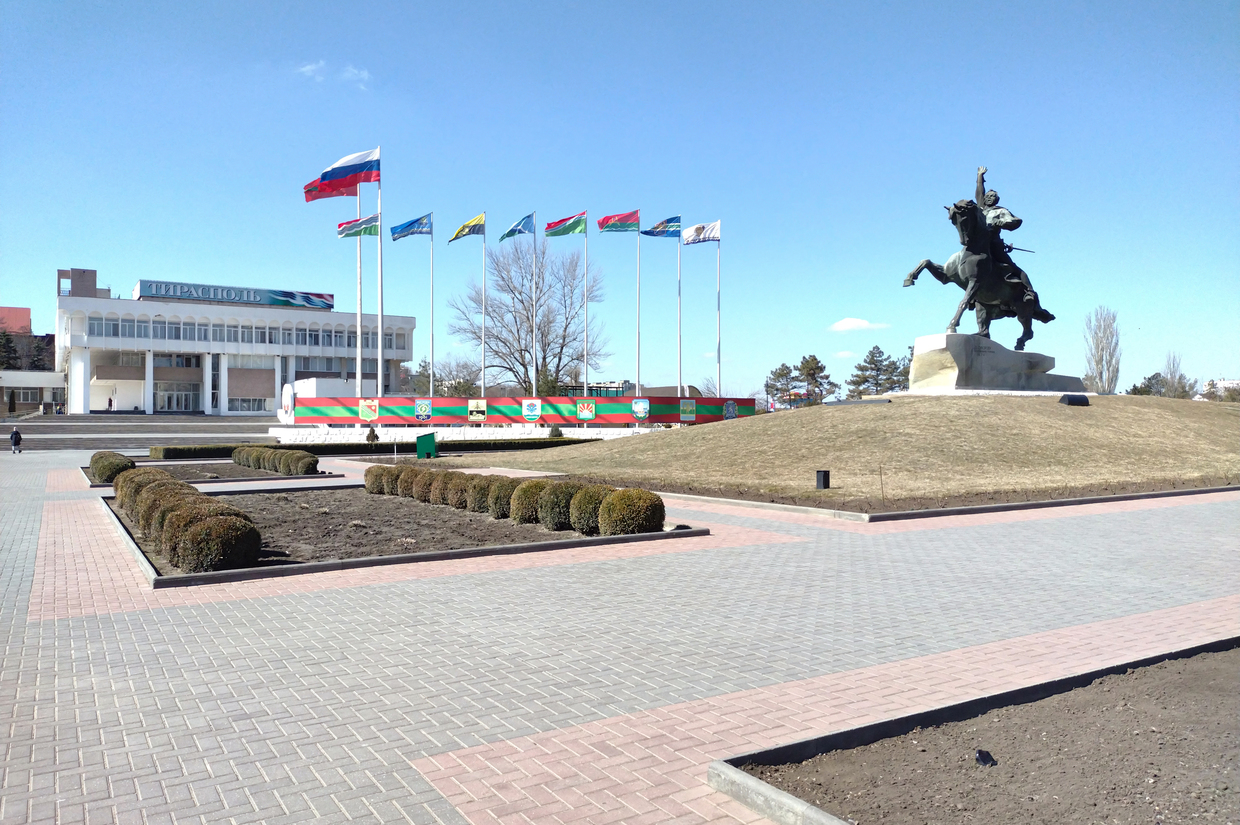
That said, Kiev hasn’t withdrawn from the negotiations yet. The Moldovan Reintegration Bureau reports the Ukrainian side is continuing to participate in the Joint Control Commission charged with the coordination of the demilitarized zone and supervision of the peacekeeping operation. “It’s hard to make predictions. We don’t know how the war will end and how it will affect the political climate and the Russia–Ukraine relations,” Oleg Serebryan, the Moldovan deputy prime minister, said. He added that it’s not the best time to propose changing the format; “First, we need to clarify the situation.”
Ukraine is still part of the talks, but continues to talk tough towards the PMR. It sees Russian peacekeepers as a threat to its national security and has closed its border with Transnistria. This initiative has resulted in massive lines on the border with Moldova; with refugees waiting for 10 to 72 hours before crossing it.
However, it’s unlikely that Kiev is ready to provoke hostilities. Most residents of the PMR are Moldovan citizens, and Chisinau's possession of Transnistria is internationally recognized, which means Ukraine would need its approval to invade the area. Having said that, the current events have made the Transnistrian case a key issue in the European security system.


